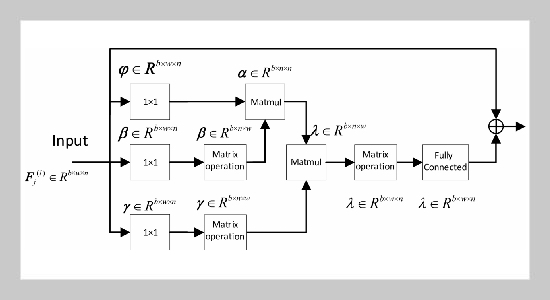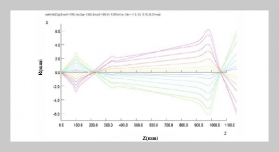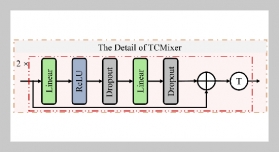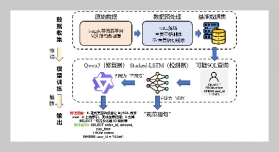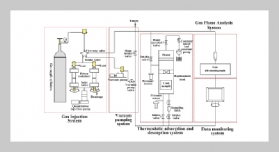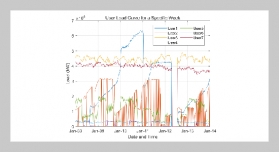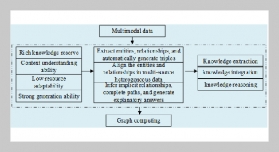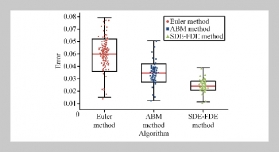- [1] J. I. Butenko, M. Galetka, and E. Sineva, (2022) “De�veloping a Semantic Role Labeling System in Scientific and Technical Texts on Aviation and Astronautics" Au�tomatic Documentation and Mathematical Linguis�tics 56(5): 251–260. DOI: 10.3103/S0005105522050077.
- [2] E. Isaeva, O. Manzhula, and O. Baiburova. “Seman�tic Framing for Specialized Knowledge Modelling”. In: Specialized Knowledge Mediation: Ontological & Metaphorical Modelling. Springer, 2022, 109–123. DOI: 10.1007/978-3-030-95104-7_5.
- [3] C. Campagnano, S. Conia, and R. Navigli. “SRL4E– Semantic Role Labeling for Emotions: A unified eval�uation framework”. In: Proceedings of the 60th Annual Meeting of the Association for Computational Linguis�tics (Volume 1: Long Papers). 2022, 4586–4601. DOI: 10.18653/v1/2022.acl-long.314.
- [4] K. D. Varathan, A. Giachanou, and F. Crestani, (2017) “Comparative opinion mining: a review" Journal of the Association for Information Science and Technol�ogy 68(4): 811–829. DOI: 10.1002/asi.23716.
- [5] T. T. Torrent, E. E. d. S. Matos, F. Belcavello, M. Viridi�ano, M. A. Gamonal, A. D. d. Costa, and M. C. Marim, (2022) “Representing context in framenet: A multidimen�sional, multimodal approach" Frontiers in Psychology 13: 838441. DOI: 10.3389/fpsyg.2022.838441.
- [6] Z. Li, H. Zhao, J. Zhou, K. Parnow, and S. He, (2022) “Dependency and span, cross-style semantic role labeling on PropBank and NomBank" ACM Transactions on Asian and Low-Resource Language Information Processing 21(6): 1–16. DOI: 10.1145/3526214.
- [7] S. W. Brown, J. Bonn, G. Kazeminejad, A. Zaenen, J. Pustejovsky, and M. Palmer, (2022) “Semantic rep�resentations for nlp using verbnet and the generative lex�icon" Frontiers in artificial intelligence 5: 821697. DOI: 10.3389/frai.2022.821697.
- [8] M. Palmer, D. Gildea, and P. Kingsbury, (2005) “The proposition bank: An annotated corpus of semantic roles" Computational linguistics 31(1): 71–106. DOI: 10.1162/0891201053630264.
- [9] P. Thompson, S. A. Iqbal, J. McNaught, and S. Ana�niadou, (2009) “Construction of an annotated corpus to support biomedical information extraction" BMC bioin�formatics 10: 1–19. DOI: 10.1186/1471-2105-10-349.
- [10] J. Liu, C. Liang, and J. Xu, (2022) “Document-level event argument extraction with self-augmentation and a cross-domain joint training mechanism" Knowledge�Based Systems 257: 109904. DOI: 10.1016/j.knosys.2022.109904.
- [11] Z. Liu, D. Jiang, C. Zhang, H. Zhao, Q. Zhao, and B. Zhang, (2021) “A novel fireworks algorithm for the protein-ligand docking on the autodock" Mobile Net�works and Applications 26: 657–668. DOI: 10.1007/s11036-019-01412-6.
- [12] Y. Zhao, H. Li, and S. Yin, (2022) “A Multi�channel Character Relationship Classification Model Based on Attention Mechanism" Int. J. Math. Sci. Com�put.(IJMSC) 8: 28–36. DOI: 10.5815/ijmsc.2022.01.03.
- [13] K. Munir, H. Zhao, and Z. Li, (2021) “Adaptive convo�lution for semantic role labeling" IEEE/ACM Transac�tions on Audio, Speech, and Language Processing 29: 782–791. DOI: 10.1109/TASLP.2020.3048665.
- [14] H. Fei, M. Zhang, B. Li, and D. Ji. “End-to-end seman�tic role labeling with neural transition-based model”. In: Proceedings of the AAAI conference on artificial intel�ligence. 35. 14. 2021, 12803–12811. DOI: 10.1609/aaai.v35i14.17515.
- [15] Z. Liu, C. Zhang, Q. Zhao, B. Zhang, and W. Sun. “Comparative study of evolutionary algorithms for protein-ligand docking problem on the AutoDock”. In: Simulation Tools and Techniques: 11th International Conference, SIMUtools 2019, Chengdu, China, July 8– 10, 2019, Proceedings 11. Springer. 2019, 598–607. DOI: 10.1007/978-3-030-32216-8_58.
- [16] X. Meng, X. Wang, S. Yin, and H. Li, (2023) “Few-shot image classification algorithm based on attention mecha�nism and weight fusion" Journal of Engineering and Applied Science 70(1): 1–14. DOI: 10.1186/s44147-023-00186-9.
- [17] J. Zhang, Q. He, and Y. Zhang, (2021) “Syntax grounded graph convolutional network for joint entity and event extraction" Neurocomputing 422: 118–128. DOI: 10.1016/j.neucom.2020.09.044.
- [18] C. Li, G. Zhan, and Z. Li. “News text classification based on improved Bi-LSTM-CNN”. In: 2018 9th International Conference on Information Technology in Medicine and Education (ITME). IEEE. 2018, 890–893. DOI: 10.1109/ITME.2018.00199.
- [19] N. Xue and M. Palmer. “Calibrating features for se�mantic role labeling.” In: EMNLP. 2004, 88–94.
- [20] M. J. Al-Muhammed and D. W. Lonsdale, (2022) “Ontology-aware dynamically adaptable free-form natu�ral language agent interface for querying databases" Knowledge-Based Systems 239: 108012. DOI: 10.1016/j.knosys.2021.108012.
- [21] D. N. Ribeiro. “Reasoning and Structured Explanations in Natural Language via Analogical and Neural Learn�ing". (phdthesis). Northwestern University, 2023.
- [22] S. Sun, C. Luo, and J. Chen, (2017) “A review of nat�ural language processing techniques for opinion mining systems" Information fusion 36: 10–25. DOI: 10.1016/j.inffus.2016.10.004.
- [23] W. Li, D. Cheng, L. He, Y. Wang, and X. Jin, (2019) “Joint event extraction based on hierarchical event schemas from FrameNet" IEEE Access 7: 25001–25015. DOI: 10.1109/ACCESS.2019.2900124.
- [24] L. Yuan, (2023) “Semantic Role Labeling Based on Va�lence Structure and Deep Neural Network" IETE Jour�nal of Research: 1–9. DOI: 10.1080/03772063.2023.2220683.
- [25] M. Liu, Y. Zhang, J. Xu, and Y. Chen, (2021) “Deep bi-directional interaction network for sentence matching" Applied Intelligence 51: 4305–4329.
- [26] C. Zhang, J. James, and Y. Liu, (2019) “Spatial-temporal graph attention networks: A deep learning approach for traffic forecasting" IEEE Access 7: 166246–166256. DOI: 10.1109/ACCESS.2019.2953888.
- [27] G. K. W. Huang and J. C. Lee. “Hyperpartisan news and articles detection using Bert and Elmo”. In: 2019 International Conference on Computer and Drone Appli�cations (IConDA). IEEE. 2019, 29–32. DOI: 10.1109/ IConDA47345.2019.9034917.
- [28] A. Yousif, Z. Niu, J. Chambua, and Z. Y. Khan, (2019) “Multi-task learning model based on recurrent convolu�tional neural networks for citation sentiment and purpose classification" Neurocomputing 335: 195–205. DOI: 10.1016/j.neucom.2019.01.021.
- [29] Z. Wang, Y. Zhang, T. Lv, and L. Luo, (2022) “GTAINet: Graph neural network-based two-stage anomaly identification for locking wire point clouds using hierarchi�cal attentive edge convolution" International Journal of Applied Earth Observation and Geoinformation 115: 103106. DOI: 10.1016/j.jag.2022.103106.
- [30] Z. Li, F. Tang, M. Zhao, and Y. Zhu, (2022) “Emocaps: Emotion capsule based model for conversational emotion recognition" arXiv preprint arXiv:2203.13504: DOI: 10.48550/arXiv.2203.13504.
- [31] Z. Yang, K. Xie, T. Li, M. Yang, W. Zhao, and Y. Ye. “Research on Color Constancy Algorithm of Weighted Fully Convolution Neural Network based on Multi-Path Feature Fusion”. In: Proceedings of the 2021 4th International Conference on Image and Graph�ics Processing. 2021, 143–149. DOI: 10.1145/3447587.3447608.
- [32] D. Chen, N. Schneider, D. Das, and N. A. Smith. “Se�mafor: Frame argument resolution with log-linear models”. In: Proceedings of the 5th international work�shop on semantic evaluation. 2010, 264–267.
- [33] D. Das and N. A. Smith. “Semi-supervised frame�semantic parsing for unknown predicates”. In: Pro�ceedings of the 49th Annual Meeting of the Association for Computational Linguistics: Human Language Tech�nologies. 2011, 1435–1444.
- [34] E. R. Bartusiak and E. J. Delp. “Transformer-Based Speech Synthesizer Attribution in an Open Set Sce�nario”. In: 2022 21st IEEE International Conference on Machine Learning and Applications (ICMLA). IEEE. 2022, 329–336. DOI: 10.1109/ICMLA55696.2022.00054.
- [35] F. Wan, Y. Yang, D. Zhu, H. Yu, A. Zhu, G. Che, and N. Ma, (2022) “Semantic role labeling integrated with multilevel linguistic cues and Bi-LSTM-CRF" Mathe�matical Problems in Engineering 2022: 1–8. DOI: 10.1155/2022/6300530.
- [36] L. Xu, X. Pang, J. Wu, M. Cai, and J. Peng, (2023) “Learn from structural scope: Improving aspect-level senti�ment analysis with hybrid graph convolutional networks" Neurocomputing 518: 373–383. DOI: 10.1016/j.neucom.2022.10.071.
- [37] S. Yin, (2023) “Object Detection Based on Deep Learning: A Brief Review" IJLAI Transactions on Science and Engineering 1(02): 1–6.


